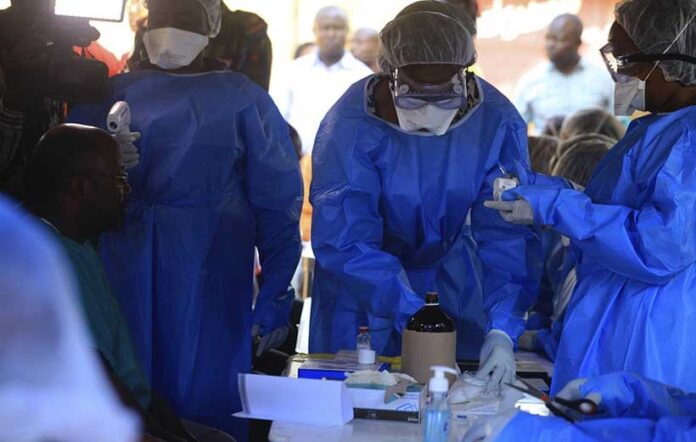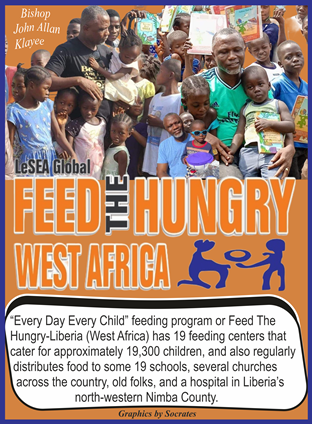According to the World Health Organization (WHO), as of 19 October 2022, there have been 64 confirmed cases of Ebola virus disease (EVD), including 25 deaths (Case fatality rate: 39%; including probable deaths: 54%).
Among these, at least 11 healthcare workers were infected, of whom five died. There are also 20 probable deaths among individuals who passed away before a sample could have been taken but who were linked to confirmed cases.
All cases reported outside of Mubende as of 12 October 2022 have an epidemiological link to the cases initially reported in this district.
There have been 25 cases who recovered, including six healthcare workers.
Although most cases have been reported from Mubende, the districts of Bunyangabu, Kyegegwa, Kassanda and Kagadi are also affected. No transmission of EVD has occurred in Kampala District to date.
As of 20 October 2022, according to the media, one case has been detected in Mityana District. The patient is a severely ill woman, who had contact with one of the deceased cases (her mother) from Mubende. Reportedly, the patient’s child also died due to EVD. The patient was transferred from Mityana to Mubende Regional Referral Hospital, and all staff who were in contact with the patient and the child have been isolated.
As of 19 October 2022, according to WHO, health officials have identified at least 2 007 contacts of cases, of which 931 (46%) have completed 21 days of follow up. According to the media, there are at least eight EVD cases recently reported that have no known links with current cases.
Background
On 20 September 2022, the Ministry of Health in Uganda, together with the World Health Organization – Regional Office for Africa (WHO AFRO) confirmed an outbreak of EVD due to Sudan ebolavirus in Mubende District, Uganda, after one fatal case was confirmed.
The index case was a 24-year-old man, a resident of Ngabano village of Madudu sub-county in Mubende District. The patient experienced high fever, diarrhoea, abdominal pain, and had been vomiting blood since 11 September 2022. Samples were collected on 18 September 2022 and EVD was laboratory-confirmed on 19 September. The patient died on the same day, five days after hospitalisation.
On 15 October 2022, the President of Uganda imposed a 21-day lockdown on Mubende and Kassanda districts to contain the outbreak of EVD. Measures include an overnight curfew, closing places of worship and entertainment, and restricting movement in and out of the two districts.
There has been one death reported in Kampala of a man who travelled from Mubende to the capital city to seek help. The wife of the deceased man has also tested positive for EVD and remains in an isolation centre in Kampala. The couple became infected in Mubende.
The Ugandan government is carrying out community-based surveillance and active case finding. An on-site mobile laboratory has been established in Mubende and risk communication activities are ongoing in all affected districts. Africa Centres for Disease Control and Prevention (Africa CDC), WHO, Global outbreak alert and response network (GOARN), and other partners have teams in Uganda to support the coordination of the response.
Previously, EVD in Uganda was reported in 2019 due to Zaire ebolavirus, which was imported from the Democratic Republic of the Congo. EVD outbreaks caused by Sudan ebolavirus have previously occurred in Uganda (four outbreaks) and Sudan (three outbreaks). The last outbreak of EVD due to Sudan ebolavirus in Uganda was reported in 2012.
ECDC Assessment
Risk to EU/EEA citizens living in or travelling to affected areas in Uganda
Considering the limited size of the outbreak and the absence of chains of transmission in densely populated areas (e.g. the capital city of Kampala), the current probability that EU/EEA citizens living in or travelling to EVD-affected areas of Uganda will be exposed to the virus is very low, provided that they adhere to the recommended precautionary measures (see further information below). Transmission requires direct contact with blood, secretions, organs or other bodily fluids of dead or living infected people or animals; these are all unlikely sources of exposure for the general EU/EEA tourists or expatriates in Uganda.
An increase in cases and, most importantly, the occurrence of chains of transmissions in populated areas and cities such as Kampala would increase the likelihood of exposure of EU/EEA citizens to Ebola virus. Considering that infection with Sudan ebolavirus leads to severe disease, but the probability of exposure of EU/EEA citizens is very low, the impact for the EU/EEA citizens living and travelling in affected areas in Uganda is considered low. Overall, the current risk for EU/EEA citizens living or travelling to affected areas in Uganda is considered low.
Staff members of humanitarian, religious and other organisations, particularly healthcare workers who are in direct contact with patients and/or local communities in the affected areas, are more likely to be exposed to the virus. The likelihood of infection for this group is currently low, provided that they adhere to the appropriate infection prevention and control measures. Similar to the previous scenario, the impact is considered low. Therefore, the overall risk for EU/EEA citizens deployed in response to the outbreak is considered low.
Risk of introduction and spread within the EU/EEA
The most likely route by which the Ebola virus could be introduced to the EU/EEA is through infected people from affected areas travelling to the EU/EEA, or medical evacuation of cases to the EU/EEA. According to the International Air Transport Association (IATA), in 2019, about 126 000 travellers arrived from Uganda to the EU/EEA region. The likelihood of secondary transmission of Ebola virus within the EU/EEA and the implementation of sustained chains of transmission within the EU/EEA is very low as cases are likely to be promptly identified and isolated, and follow-up control measures are likely to be implemented. During the large EVD outbreak in West Africa in 2013–2016, there was only one local transmission in the EU/EEA (in Spain) in a healthcare worker who had attended to an evacuated EVD patient. The impact for the EU/EEA citizens living in the EU/EEA is considered low, and overall, the current risk for the citizens in the EU/EEA is considered very low.
Vaccines
The licensed vaccines available, protect against EVD due to Zaire ebolavirus. There are no licensed vaccines against EVD due to Sudan ebolavirus, and there are no available data on the level of cross-protections. The availability of a vaccine was proven to be very helpful in the control of the recent outbreaks in the Democratic Republic of the Congo. The unavailability of vaccines will be an additional challenge in the control of this outbreak.
ECDC actions
ECDC is monitoring this situation through its epidemic intelligence activities and will report relevant updates on a weekly basis.
Ebola cases in Uganda, 2022
Ebola cases in Uganda 2022. Source: WHO; Ministry of Health, Uganda; Government of Uganda
Disclaimer: This figure is based on the latest available data from different public official sources. Updates are not always available on a daily basis. In addition, please note that there is a delay between the date of disease onset, the date of detection and the date of reporting, resulting in a reporting lag. This should be taken into consideration when interpreting these figures. Source: ecdc.europa.eu







